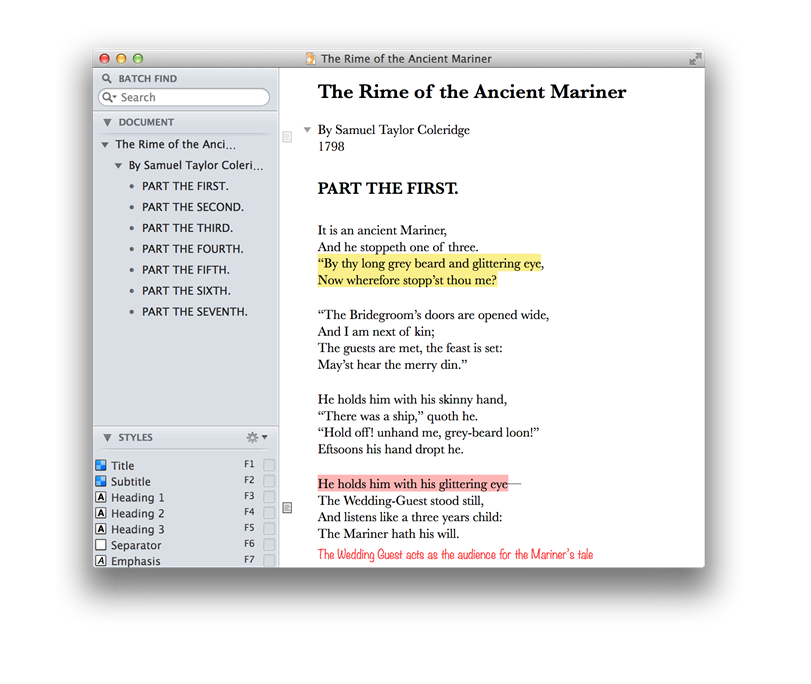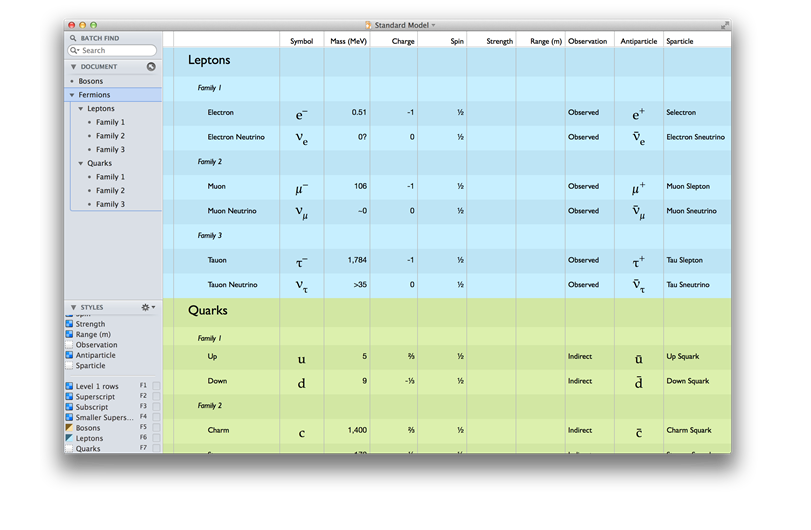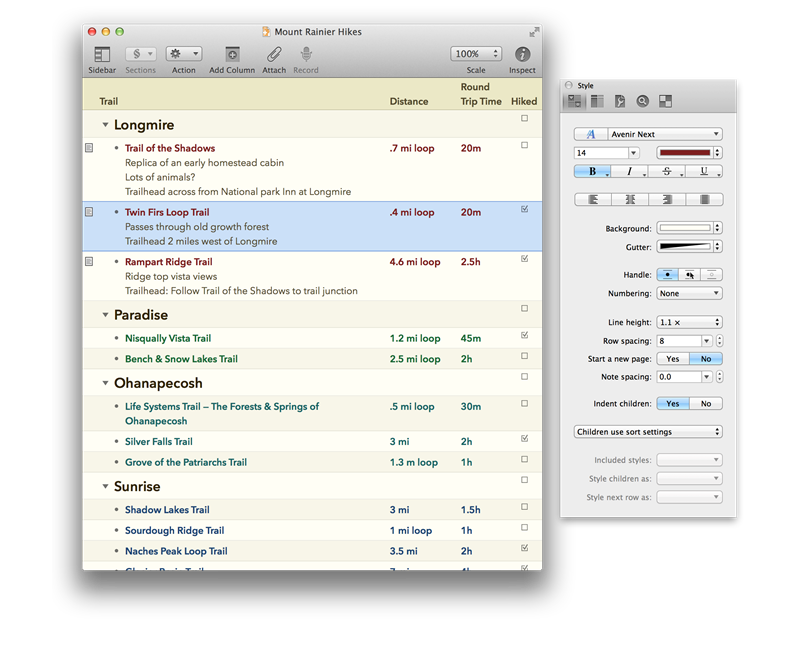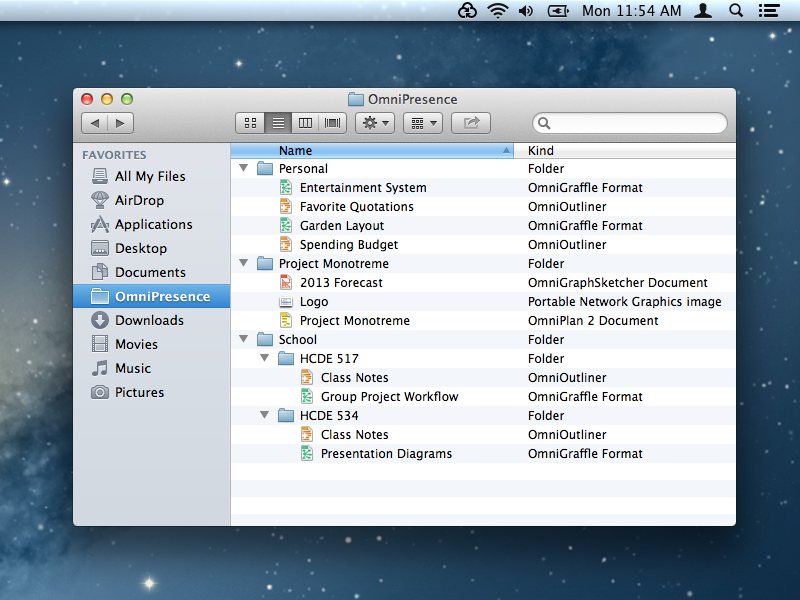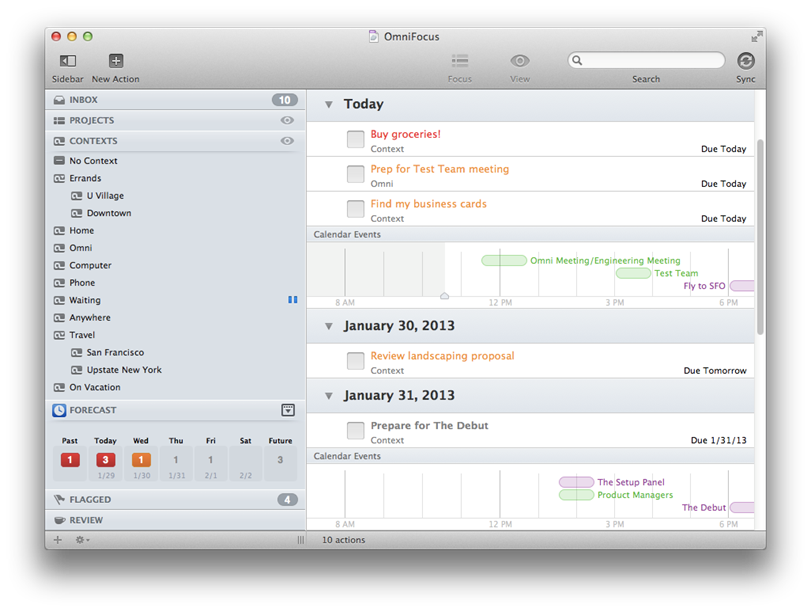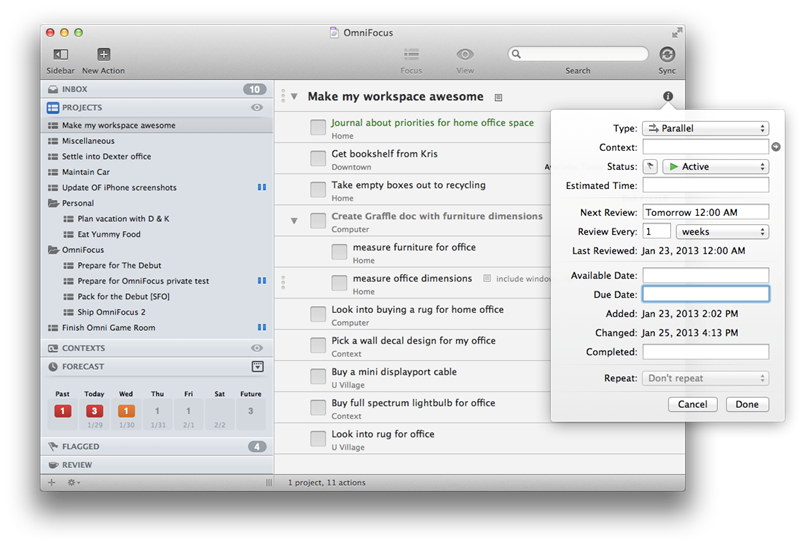In the midst of The Omni Group’s hectic schedule of debuting exciting new Mac versions of some of their most popular software, including the highly anticipated OmniFocus 2, CEO Ken Case sat down with MacStories from the 2013 Macworld/iWorld event to tell us about some of the new products releasing this year.
Ken and I discussed the upcoming versions of OmniFocus, OmniOutliner, their new OmniPresence technology, and also some great new iPad specific features coming to OmniGraffle and OmniPlan this year.
Don: Ken, it is wonderful to speak with you again, I would love to hear about OmniFocus and the projects you have lined up for 2013.
Ken: When we last spoke in 2012 we were just shipping OmniPlan for iPad and it finally gave us the opportunity to focus our attention back on Mac again, and to get back to so many of these projects we had to put on hold for so long like OmniFocus 2 and OmniOutliner 4.
Right now we are working on OmniFocus 2 (which we debuted two days ago) and we also started privately testing OmniOutliner 4 last week. We haven’t made quite as much noise about OmniOutliner. OmniOutliner customers have been waiting so long I feel like anything I tell them right now, they will feel like, “Are you taunting me right now?” [laughter] The feedback that we have received so far from the people in the private test has been really great; they are really happy with the app. It is not done yet – for example it doesn’t print yet – but we completely rebuilt the outlining engine to leverage more of the GPU, and we had to completely rebuild a lot of the features that were in Outliner 3 all over again.
We finally got the point where within the last month I have been able to use it instead of OmniOutliner 3, which was a big milestone for us. A popular feature – Text Zooming – is now built-in. It has support for not just zooming text, but also hiding and showing columns, and a much better way of handling links. We are really happy about the new Outliner, although we haven’t been making a lot of noise about it yet.
Don: Did you learn anything from the recent success of OmniOutliner for iPad that then made its way into OmniOutliner 4 for Mac?
Ken: Yes, one of the biggest lessons we learned is that our style system was way too complicated. [laughter] And so when we brought over the style system to the iPad, instead of the hierarchical styling systems now we just have name styes and child styles. Changing a single name style will change all of the child styles along with it and we think that is a much better system. So we brought that into OmniOutliner 4.
Don: So what other projects are you currently working on?
Ken: Other projects we are working on include adding Microsoft Office compatibility to OmniGraffle and OmniPlan for iPad.
In OmniGraffle for iPad you will be able to open and work with Visio documents and in OmniPlan you will be able to work with Microsoft Project documents. This will be a big deal for people that work in a corporate environment and want to carry an iPad around with them; right now they don’t have a good way to open up and use those documents. That should be coming in the next few months.
We are also working on OmniPresence, which is our syncing technology. OmniPresence is built to do automatic cloud document syncing between any device. The way we are doing it is not to hook it up into some backend proprietary service; instead, OmniPresence talks to an open web protocol, so you will be able to run your sync server on any Apache web server. Users will be able to host their own clouds and access them from any device, wherever they are. We will still be providing the Omni Sync Server for people that will not want to run their own sync server. Particularly for businesses that do not want to host their data on someone else’s cloud, we think this will be a great solution.
Of course, OmniPresence is not limited to enterprise customers: we see this appealing to anyone willing to host their own cloud syncing solution. In addition, we are open sourcing the work that we are doing so that other developers can use it in their apps as well. On the Mac all the document syncing will happen through a menu bar tool we are releasing. So how it works is you create an account, and you select which folder you would like to sync, and that folder will be synced with the web server and accessible from your devices running Omni applications. We are really excited about it, and we think this will really appeal to people that have been asking for automatic document syncing between OmniOutliner for the iPad and OmniOutliner for the Mac. I hope OmniPresence will surpass their expectations of being able to sync and share documents with their entire team.
So that is OmniPresence, and of course the big news from this week is the debut of OmniFocus 2.
Don: I am personally very excited about OmniFocus 2. The screenshots look absolutely gorgeous.
Ken: Thanks! The reception we received from the Macworld attendees has been really positive.
Don: That is great news Ken. So tell me, how were you able to balance what you learned from the release of OmniFocus for iPad over to the Mac without conflicting with the traditional Mac experience?
Ken: Well, what we learned was that you couldn’t just take an interface from one platform and plaster it onto another platform and have it feel at home. So when we went back to the Mac, we started from scratch designing an interface that feels at home on the Mac. But we did want to make sure we learned from lessons of moving over to the iPad: we wanted to get away from the outline view and to get away from having one long horizontal column for tasks because that is not a very good layout for communicating information to the customer effectively.
We also learned that the navigation needed to be reworked. Originally, OmniFocus users had all these navigational tools from the toolbar to the sidebar and as the app evolved and people were using it, it was easy to keep adding on features but for anyone new to OmniFocus it had become overwhelming. In designing OmniFocus 2, we simplified it down to only one sidebar to drill down into. All the feedback we had received from OmniFocus for iPad told us that it was the most usable version of OmniFocus to date so we knew that this was the way to go on Mac as well.
We also brought many of the innovative modes from the iPad back to the Mac. For example, Forecast and Review modes. In both of these situations, we didn’t just copy and paste what we did on the iPad: we created an entirely new experience on the Mac. With Forecast mode, we realized we had a lot more screen real-estate to work with and that we could put this in the sidebar and it would have the option to show you either a week’s worth of stuff, or even an entire month’s worth of information there.
When we move from one platform to the next, we try to learn how people interact with the app and we try to apply those interactions to the next platform. We certainly learned from the iPad version but we would never copy directly to the Mac.
Don: You mentioned the newly designed layout and navigational structure of OmniFocus 2 and from the screenshots I have seen coming out of Macworld, OmniFocus is sporting a redesigned monochromatic sidebar UI. Do you think this lack of color may have an adverse effect on people being able to quickly navigate and find themselves in the new sidebar?
Ken: That’s a good question. One of the reasons we released as early as we did was so that we could start getting feedback from customers. This will help us figure out if we are on the right track and if we met our goals for OmniFocus 2. This is not the final design: what we are looking for now is for customers to tell us what they do like and what they don’t like so we can take that feedback and iterate on the current design. We’ll enter into the private test release within the next month and we really hope to hear from customers about how they are using OmniFocus 2, and what changes need to be made. If they tell us that the lack of color in the sidebar makes it less useful then we can take that back and use that feedback to improve the final release. It is funny because I have heard two other similar comments about that today so we may need to think about it. Which is why we don’t know exactly when we will be shipping OmniFocus 2, because we don’t know how many iterations we will go through during private testing.
Don: Did you feel any pressure doing a complete rewrite of an app that is so tightly integrated into many people’s “trusted systems”?
Ken: We had a lot of confidence from the work we did on the iPad. The very different interface in the iPad version didn’t break anyone’s trust in the system, so we knew that it was safe to rework the design as long as we didn’t break the underlying principles.
All of the underlying information about how tasks, projects, and core functionality communicate between each other are completely unchanged from OmniFocus 1. What has changed is that we have made it easier to get to your lists, and we think the interface is much more usable. We thought pretty hard about how we didn’t want to lose keyboard access to all of the features going into OmniFocus 2. We know a lot of our users work with keyboard shortcuts – it’s just a faster way to work – so we maintained that accessibility. We also wanted to make sure that we allowed people to edit more than one item at a time. You can select multiple tasks or projects and pull up the Inspector and edit the attributes all at once, which is a feature we didn’t have available on the iPad even though the interface is more similar to the iPad now.
Of course, we are all heavy users of OmniFocus here so we have our own expectations and self-criticism going on so we did have to reject some changes we thought about making in case they broke certain workflows.
Don: One of the biggest changes that our readers may be interested in knowing is that OmniFocus will now be available in two versions. One version that will be a nice entry point for new customers, and another Pro version which includes Perspectives and AppleScript for power users. Can we expect any new functionality specific to the Pro version for the OmniFocus power users?
Ken: That’s a good question. Some parts of the AppleScript we are writing now have to be completely rewritten because they were based around our old outline structure. Other AppleScript actions we don’t need to change at all because they are simple interactions with the model. Aside from maintaining current functionality, it is not a goal in OmniFocus 2.0 to expand on any new AppleScript features, because it is already extremely robust. However, it is a direction we want to continue towards, especially as more customers use the new version and we get feedback on what features they would find useful.
Don: Can we expect further integration between The Omni Group’s suite of software with the upcoming new releases?
Ken: That would be great, but that is not something we want now as it would slow down the release of OmniFocus 2 or OmniOutliner 4. I do want to move towards stronger integration between all of our apps as we go forward. I feel that the weakest integration is with our iOS apps, specifically on the iPad. For example, it would be great if you could send an OmniOutliner outline over to OmniFocus and open that up and turn it into a project template like you can on the Mac right now. That is not something we are announcing today or in the upcoming releases of 2.0 and 4.0.
It’s been a lot of fun to work on all of these apps. It’s great to finally share it with outside customers and get their feedback on these projects that have been on the back burner for so long.
Don: It is quite impressive that Omni has been able to grow almost the entire line-up of iOS and Mac apps over the past couple of years. Have you had to grow as a company to keep up with your own goals and expectations?
Ken: Yes, we certainly have. That wasn’t our goal when we decided to do 5 new apps and bring our software over to the iPad but the reality is – where we used to have 5 products, now we have 10. They all require attention and we continue to grow as a company slowly to support all of our concurrent projects. We recent passed the 50 employee mark; right now we are at about 54 employees and we moved to new offices so we have some more elbow room again. [laughter] So yeah, we are definitely growing.
Don: Ken it has been a pleasure chatting with you, I appreciate you talking time out of your busy schedule at Macworld to share some insight on the new products with our readers.
Ken It was a pleasure talking with you too Don, thank you.



